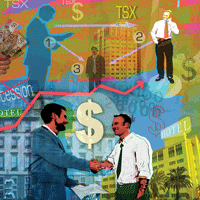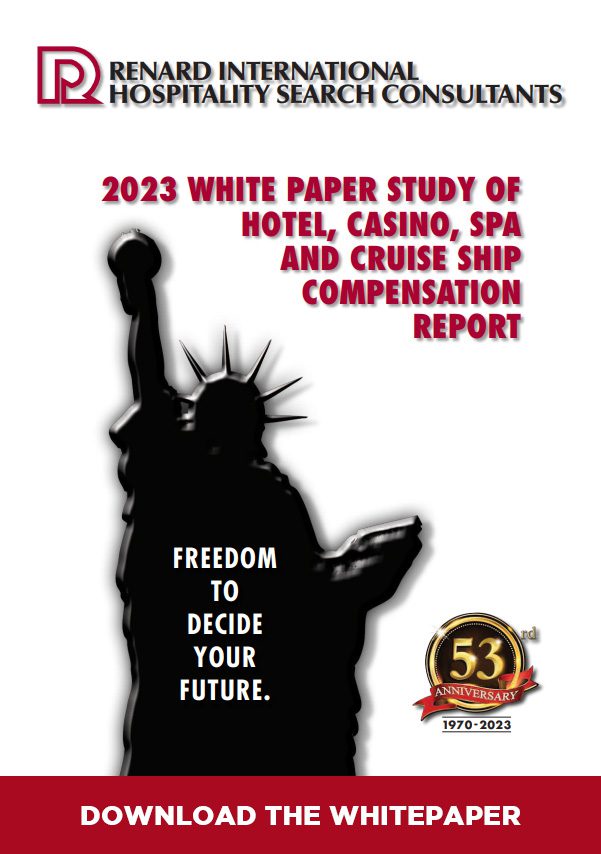After a dizzying number of transactions in 2007 and 2008, last year was eerily quiet
To say 2009 was a down year in the Canadian hotel industry is a bit of an understatement. It’s akin to saying the Toronto Maple Leafs are a piece or two away from greatness. Hotel investment activity was virtually torpedoed last year, especially in light of the fact that the industry came off record highs in 2007 and a fairly robust 2008. Just how bad did it get?
“Let’s put it this way,” says Tony Pollard, president of the Ottawa-based Hotel Association of Canada (HAC). “According to Colliers International Hotels, we did just over $1 billion in transactions in 2008, while in 2009 we did $398 million. That’s a 62 per cent drop.” If you consider the industry did a whopping $4.58 billion in transactions in 2007, the decline is steeper still.
Four and a half billion dollars is a big number to be down in just two years, but if you look at the confluence of factors in the marketplace, it’s easy to see why the wheeling and dealing grinded to a halt. There was the credit meltdown and housing crisis in the U.S., not to mention the crumbling of the auto sector, instability on Wall St. — precipitated by the fall of Lehman Brothers in September 2008 — and huge declines in the TSX. Add to that the mass hysteria over the H1N1 flu pandemic, stricter passport regulations and a rising dollar, and it all conspired to keep tourism down.
Those negative forces had a big impact on the industry’s key economic indicators for 2009. According to The Conference Board of Canada’s Winter 2010 Industrial Outlook, real GDP in the accommodation industry was $9.5 billion, down 3.3 points from $9.8 billion in 2008. Profits before taxes were $471 million last year, a decline of 10.6 points from $527 million, and the profit margin fell from 4.4 to 4.1 per cent.
The Canadian unemployment rate also peaked at 8.7 in the past year, and Pollard says the recession had a huge impact on total employment in the sector. In 2008, 420,000 people were employed across the hotel industry; today, that figure is 320,000. Wages were cut as well, down $2.7 billion to $8 billion and the taxes the industry paid to government were just $6.3 billion, off $1.7 billion from 2008. “It’s the toughest year we’ve had since I joined the association in 1991,” says Pollard.
Not surprisingly, business and leisure travellers (both domestic and international) scaled back on travel, leaving Canadian hoteliers to deal with rapidly retreating performance numbers. According to Toronto-based PKF Consulting, Canada’s national occupancy rate in 2009 was 58 per cent, down five per cent from 2008. National ADR was $125, down $6, and RevPAR was $73, down $10 from the previous year. The Conference Board of Canada also reports that after five consecutive years of growth, lodging revenues began to soften in the second half of 2008. In ’09, they kept falling — room prices declined 3.4 per cent and unit sales were down 3.2 per cent — spurring a 6.6-per-cent dip in total industry revenues. The decrease from $12.1 billion to $11.3 billion was the largest ever, including the SARS crisis of 2003.
All things considered, it’s not shocking to hear hotel executives say the environment wasn’t conducive for signing deals. “For us, 2009 was a write-off,” says Anil Taneja, vice-president, North America, for Palm Holdings, a family owned company that boasts an international portfolio of hotels in the U.K., India, as well as in Ontario, including Four Points by Sheraton and Hampton Inns. “We were sitting there looking to make a purchase, but the expectations were very far off for buyers and sellers. To the point where we had narrowed the value down on a building and the sellers were at double our value. The sellers still believed in 2008’s numbers, which was the obvious peak of the market.”
Kevin Toth, the new COO of Skyline Hotels, says his company focused on reinvesting capital into its existing assets, which include the Pantages and Cosmopolitan hotels in Toronto, Horseshoe Resort near Barrie and a green-field project the company is developing in Port McNicoll, Ont. Nevertheless, Skyline was one of the few companies to negotiate a large deal during the recession — the $52-million purchase of Toronto’s King Edward Hotel.
But the fact that most industry stakeholders took a measured approach, waiting to see how the downturn played out, before buying or selling any significant assets, was likely wise. Many economists like Benjamin Tal of CIBC World Markets believe the global economy was rescued from the brink of disaster by shrewd financial strategists. “We were this close to a total collapse,” Tal said at the recent Foodservice Interchange Conference in Toronto, adding that economists like Ben Bernanke who called for immediate and massive amounts of stimulus spending to kick-start the economy “saved us.” While the long-term impacts of this infrastructure investment are yet to be seen, Canada’s Economic Action Plans seems to have taken root quickly, and the economy is turning around.
Of the jobs market, The Conference Board of Canada’s Pedro Antunes says that though some 400,000 jobs were lost during the recession, the 8.7 per cent unemployment figure can be misleading. “For most of the 1980s and 1990s, the unemployment rate averaged higher than that. We’ve seen a fairly big impact on GDP, but a relatively modest impact on total employment,” says Antunes. “Firms are aware they need to hang onto their key occupations and skilled workers as much as possible, as they’re a rare item.”
In fact, the rebounding of the jobs sector has been one of the main catalysts in Canada’s quick turnaround. According to the latest figures, some 60,000 full-time positions were created in February alone, pulling the unemployment rate back down to 8.2 per cent. In addition, the Canadian housing market remained on strong ground, thanks to low interest rates and our conservative banks not getting sucked into the sub-prime mortgage fiasco that helped cripple the economy down south. Things are looking so rosy consumer confidence jumped 4.3 points to 92.5 per cent in March, which is 36.4 per cent higher than it was at this time last year. These positive indicators have some analysts believing the economy will grow 3.2 per cent this year.
So what does this mean for the hotel industry moving forward and, more specifically, the investors sitting on the sidelines waiting to get back in the game? “There’s a sense of cautious optimism coming off of 2009,” says Skyline’s Toth. “The Canadian economy is outpacing the U.S. economy, and if the U.S. economy was more robust, then we would feel even more stable. Here in Toronto, the second and third quarters are shaping up to be stronger than in 2009, but I don’t think we’re going to see tremendous leaps and bounds in 2010. It is going to be more of a crawling our way out.”
Nevertheless, Toth is forecasting solid activity in the near future. “With the G20 coming, I look to continued growth heading into 2011. I like the vibrancy of Toronto and surrounding areas. I have seen signs of rebirth — the real challenge is to try and grow rate.”
Though it’s widely perceived as a buyer’s market in Canada, Palm Holding’s Taneja says with the dollar so strong, “It’s hard for an investor to say, ‘I’m happy to buy that hotel in Ontario,’ when you can drive a few hours down the road and buy at a price-per pound in the U.S. In today’s market, there are a lot of people who are very strong, very liquid, who are looking to sell, because they believe the opportunity costs are there and their capital is better put into other industries, or into the U.S.”
But no matter where the money is moving, many experts believe the global recession we’re still clawing out of is directly related to reckless lending practices in the U.S., so it’s a good bet financial institutions are going to be a lot more cautious as to where they put their capital.
Pollard believes that some financial institutions will provide lending, but it’s going to be limited. The key for investors is to find out where the value is. “Do your market research and figure out what the long-term growth is going to be like,” says the HAC president. “We’re still in tough times. There is no doubt about that. But in terms of value for our assets, there’s still very good value out there right now.”
Illustrated by Eva Tatcheva/agoodson.com




















